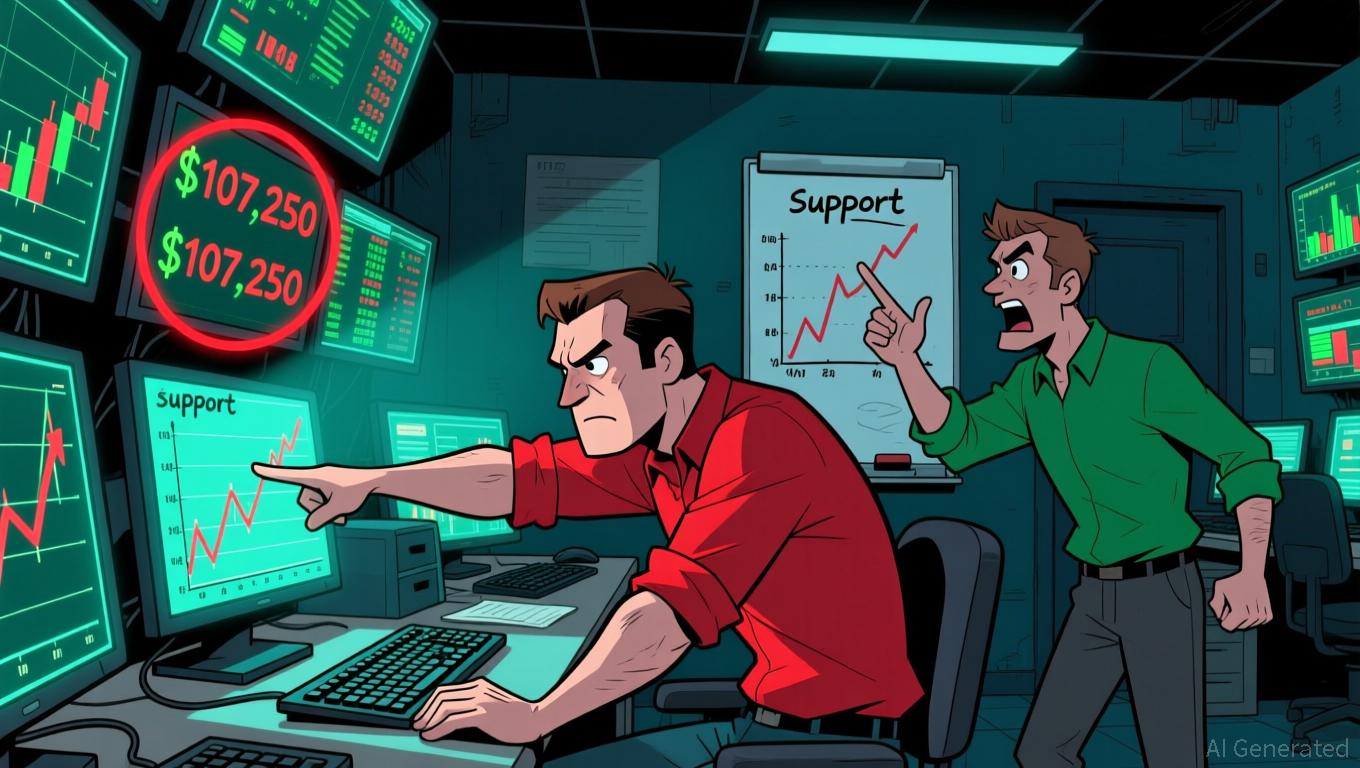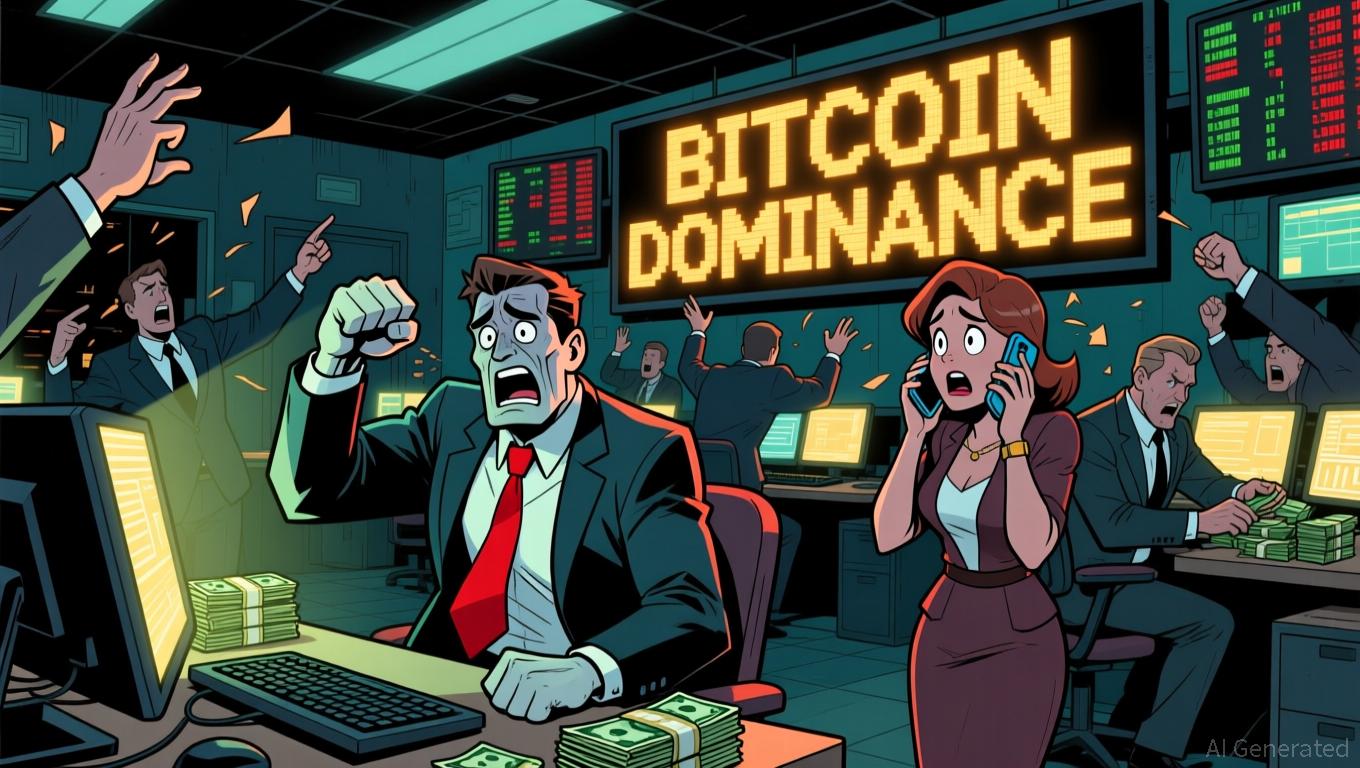Bitcoin News Update: Bitcoin's 72% Profit Rate Puts Pressure on Death Cross Bearish Predictions
- Bitcoin's recent drop below $107,250 triggered "death cross" fears but analysts note it's less severe than the 2022 crash. - Bitfinex identifies mid-cycle consolidation, with 72% of BTC supply still profitable at $100,000, signaling potential stabilization. - Market resilience contrasts 2022's systemic risks, as ETF inflows and stablecoin adoption highlight evolving crypto dynamics. - Key price levels ($107,250/$100,000) will determine bearish validity, though historical false signals caution against ove
Bitcoin's latest price drop has led some to draw parallels with previous market upheavals, yet industry experts believe this downturn is milder than the crypto crash of 2022. After falling below the important $107,250 mark—which has now become a resistance level—Bitcoin (BTC) dipped to $105,000,
This pullback is consistent with what many call a "mid-cycle consolidation phase,"

Investors are also contending with significant changes in the broader market structure.
Although the market is currently volatile, it is showing more resilience than during the 2022 meltdown, when Terra's failure wiped out $1 trillion from the industry. Today’s conditions, while unsettled, do not carry the same level of systemic risk,
As the market works through this correction, attention is focused on whether Bitcoin can reclaim important psychological levels. A sustained move above $107,250 would indicate renewed bullish energy, while further drops could deepen this consolidation period. For now, the crypto sector appears to be holding steady, though participants remain cautious about what lies ahead.
Disclaimer: The content of this article solely reflects the author's opinion and does not represent the platform in any capacity. This article is not intended to serve as a reference for making investment decisions.
You may also like
The COAI Token Fraud: An Urgent Alert for Cryptocurrency Investors
- COAI token's 2025 collapse exposed systemic DeFi vulnerabilities, costing investors billions through regulatory loopholes and weak governance. - Scam operators exploited jurisdictional gaps in Southeast Asia and the U.S., with $10B+ annual losses attributed to AI token fraud and unclear CLARITY Act definitions. - Conflicting U.S. regulatory frameworks (SEC/CFTC) and partial measures in Hong Kong/Singapore highlight fragmented global oversight of crypto markets. - Cross-border enforcement (e.g., $13.4B se

Walmart Relies on In-House Leaders to Steer Through Retail Hurdles
- Walmart appoints John Furner, a 30-year veteran, as CEO in 2026, succeeding retiring Doug McMillion. - Furner, 51, leads U.S. operations with 4,600 stores and $120.9B Q2 revenue, emphasizing internal leadership continuity. - McMillion's 12-year tenure saw 400% stock growth but faces challenges like tariffs and affordability crises. - New CEO inherits AI-driven transformation goals, with Q3 earnings and SNAP benefit disruptions under investor scrutiny.
As traditional banks pull back, Tether rapidly steps in to meet the demand for commodity lending, offering both swift action and significant capacity
- Tether plans to expand commodity lending with $1.5B in credit, using $200B reserves to enter high-yield trade finance. - The move fills a void left by traditional banks, offering faster loans in minutes via USD and USDT, targeting emerging markets. - Hiring HSBC experts and leveraging gold reserves, Tether aims to bridge traditional and digital assets through its gold-backed token.

Bitcoin Latest Updates: Is the Crypto Bear Market Poised for a Rebound?
- Crypto Fear & Greed Index hits 16 (seven-month low) on Nov 14, 2025, reflecting extreme bearish sentiment driven by volatility, Bitcoin dominance, and risk-averse trading. - Bitcoin consolidates near $104,500 after breaking key support levels, with technical indicators suggesting potential $107,500 breakout or $100,500 decline based on ETF inflows and institutional activity. - Major altcoins like ETH, XRP , and BNB face critical support levels, while analysts cite Fed policy shifts and the GENIUS Act as
